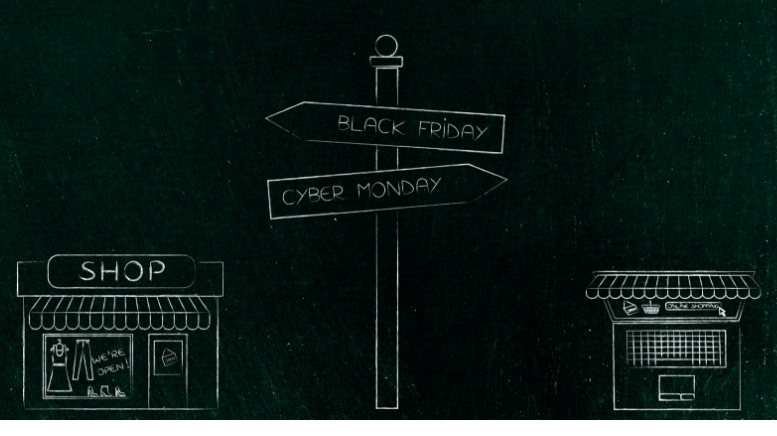The evolution of the e-commerce industry has been a hot topic over the past two years. Many investors will attribute the sector’s growth to the influence of companies like Amazon (NASDAQ:AMZN), Alibaba (NYSE:BABA), and even Facebook (NASDAQ:FB). As the world bore witness to the e-commerce surge, the media spent much of this time alleging that brick-and-mortar stores are on the brink of extinction. While some aspects of this argument are justified, traditional retail stores are not going to disappear altogether, as some have forecasted. Brands that we love will be around for a long time, even if e-commerce stores offer more variety and convenience.
Looking at the big picture, it’s not a matter of ousting traditional retail or e-commerce retail. It’s not one or the other. It’s a matter of learning to accept the advantages of both industries and learning to leverage the best of both. Doing so is fundamental to the future of both industries.
Brick-and-Mortar Retail vs. E-commerce Retail: A Debate
When something goes wrong, it’s natural to look for a source to blame. And the popular narrative surrounding the closure of brick-and-mortar retail stores is that e-commerce sites are behind it. Of course, this isn’t a complete fallacy. It’s true that e-commerce sites are at an advantage, as they do not have geographical limitations and they enable group buying, deals, and bargains. Plus, these sites get low prices that, frankly, traditional retail stores can’t compete with.
However, that doesn’t mean brick-and-mortar stores aren’t learning from this, nor does it mean that they haven’t done anything to counter it. In fact, companies like Canon (NYSE:CAJ) have halted the selling of its products on various websites because of the price disruption. Same goes for Adidas AG (OTCQX:ADDDF), a German Sports Goods company that has banned dealers from selling its products on websites like Amazon.
>> Is PayPal Investing in Uber? Some Reports Say Yes
Speaking of Amazon, we can’t ignore the influence the platform has had on traditional retail stores. In 2017, Amazon claimed 53.5% of the total online retail market, according to Forbes. One year later, Jeff Bezos’s company had even more influence, claiming 54.1% of the total market. Most likely this is because 44% of online shoppers say Amazon is their first stop when visiting e-commerce sites. It’s not the only place to go, though. As of 2018, almost 25% of business owners sell products through Facebook.
These numbers are daunting. At first glance, it looks like the traditional retail sector is done for. Stats don’t lie and nor do facts: e-commerce sites offer things that brick-and-mortar stores don’t have. Or do they?
Don’t Give Up on Traditional Retail Stores Just Yet
To grow, we have to be challenged, or else we would never push our boundaries. And that’s exactly what companies like Amazon and Alibaba have done over the past few years: challenged.
In 2018, Alibaba claimed a 58.2% share of all retail e-commerce sales.
By increasing their presence in the online retail market, Amazon and Alibaba have forced brick-and-mortar stores to take a long, hard look in the mirror. Because online shoppers have expressed interest in, for instance, the convenience of e-commerce sites and the prices that go with them, physical stores have learned that it’s essential to keep an eye on these prices. Last year, in North America, physical stores accounted for roughly 90% of all retail sales.
With these figures and with e-commerce sites pushing physical stores to evolve to the desire for online shopping, it’s hard to argue that traditional retail will go extinct. Those who argue this are not only forgetting that brick-and-mortar stores can use the growth of the e-commerce industry to evolve themselves, but that e-commerce platforms are also opening up physical stores. Again, we look to Amazon.
The Perfect Blend
Amazon understands that the future of the retail sector is blended. The probability of someone only shopping online or in physical stores is low. Knowing this, Amazon has since poured money into opening brick-and-mortar stores. In 2015, Amazon opened Amazon Books and, in 2018, Amazon Go. And then there’s Amazon’s purchase of Whole Foods, allowing the e-commerce platform to own more than 450 physical stores in three different countries.
>> Pepsi Won’t Sue Indian Farmers if They Accept Settlement Cause
Of course, some may argue that it’s just as worrying that e-commerce platforms are buying physical stores as it is that these stores may completely disappear in the next decade. With that, however, I pose a question: why is it OK for smartphone brands to act as several things in our lives, from our banks to facilitating our social lives, but it’s worrying for there to be a blend between physical and online shopping?
Takeaway
It’s all about looking at the big picture. Sure, e-commerce sites have several advantages over brick-and-mortar stores; but so does the latter over sites like Amazon in terms of customers trusting real-time purchases more. But the debate about whether brick-and-mortar is on the brink of death or not must, itself, be put to death. To grow, we need to be challenged, and we need to work together. We also need to accept that sometimes there needs to be a blend of industries.
Featured image: DepositPhotos











